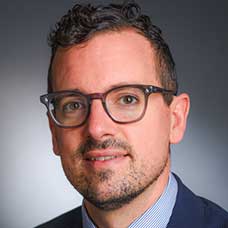Most people with incurable illness will reach a point where they can no longer speak for themselves. When this happens, clinicians hope to provide medical treatments that that person would want. Their wishes are not always clear. Clinicians often look for evidence of advance care planning, which describes the verbal or written processes that people use to communicate (to family or their clinicians) what treatments they would or would not want, or what values and goals should guide their care.
African Americans do less advance care planning for a variety of reasons, some cultural, some historical, and some related to healthcare systems and clinicians themselves. Advance care planning has been linked to high quality healthcare at the end of life, so it’s plausible that less advance care planning among African Americans (compared to European Americans) contributes to the lower quality end of life care they more commonly receive.
I’ve noticed inconsistencies in what the academic literature tells us about the communication that seriously ill African-American patients want and what my patients express to me as their wants and needs.
As a former urban primary care provider and a palliative care physician, I’ve noticed inconsistencies in what the academic literature tells us about the communication that seriously ill African-American patients want and what my patients express to me as their wants and needs. To understand different perspectives on advance care planning, colleagues from South Carolina and I did a series of focus groups with researchers and physicians, African-American church members in the community, and African Americans with serious illness and their caregivers. We suspected that they might have differences of opinion that could inform how we think about and conduct advance care planning in this population.
We found that several factors shape advance care planning among African Americans, including religion and spirituality, trust or mistrust in clinicians or the healthcare system, family relationships and experiences, relationships with clinicians, willingness to discuss prognosis, care preferences, and feelings about preparation and control. These were not surprising.
What was most surprising was how differently these groups interpreted the effect of these factors. The expert group’s perspectives reflected those in the medical literature on the subject, namely that African Americans don’t participate in advance care planning. They believe in God’s ultimate control over their illness and, therefore, do not want to discuss prognosis and prefer to have all life-sustaining treatments. Furthermore, they rely on family to make decisions, and have (justifiable) mistrust in physicians and health care systems.
However, where the experts saw these as barriers to advance care planning, seriously ill patients and caregivers described a willingness to discuss prognosis.
However, where the experts saw these as barriers to advance care planning, seriously ill patients and caregivers described a willingness to discuss prognosis. We heard things like: “you can’t make an informed decision if you haven’t been informed.” They expressed an expectation to do so with trusted clinicians and a preference to determine family participation in decision making based on their and their family’s needs. They took comfort in their faith while acknowledging that “when the Lord is ready for you, [He is] ready for you.”
Our findings suggest three things: First, African Americans hold a variety of perspectives about advance care planning. We must carefully avoid making assumptions about patient preferences regarding advance care planning based on race or other cultural attributes. Second, the deep engagement with the healthcare system required by serious illness may change perspectives on advance care planning. Third, the descriptors that we use to characterize factors (e.g. “barriers”) reflect and reinforce underlying biases that can unintentionally diminish others’ cultural values or assets. When examining public health phenomena characterized by disparity and difference, we need to think less about what is wrong (with those who receive less optimal care) and more about how to engage them using the cultural assets that they embody.
Feature image: Jarl Schmidt on Unsplash












